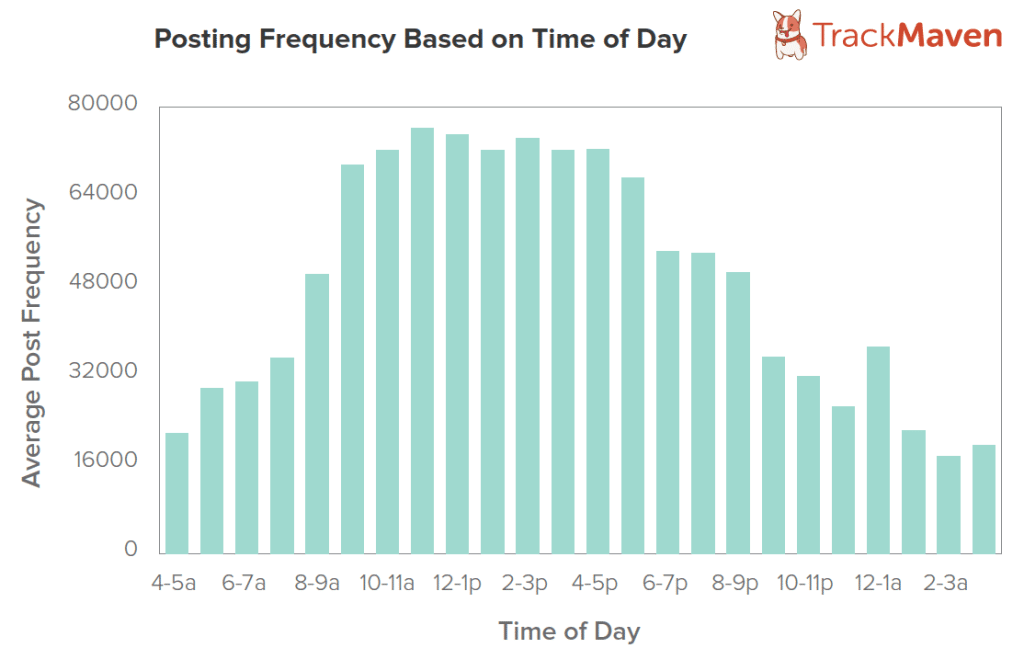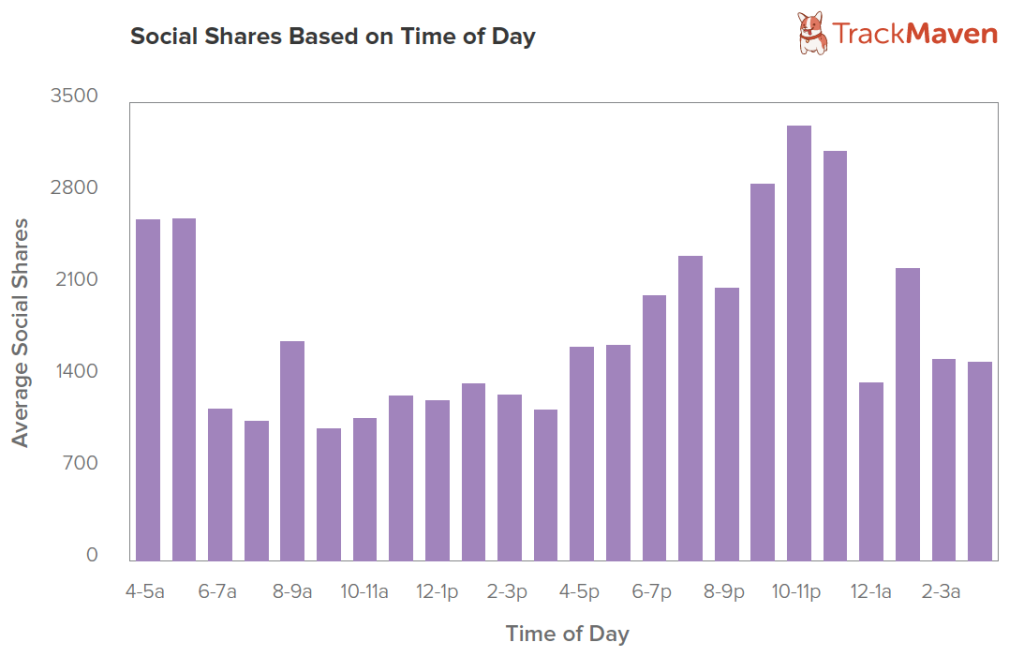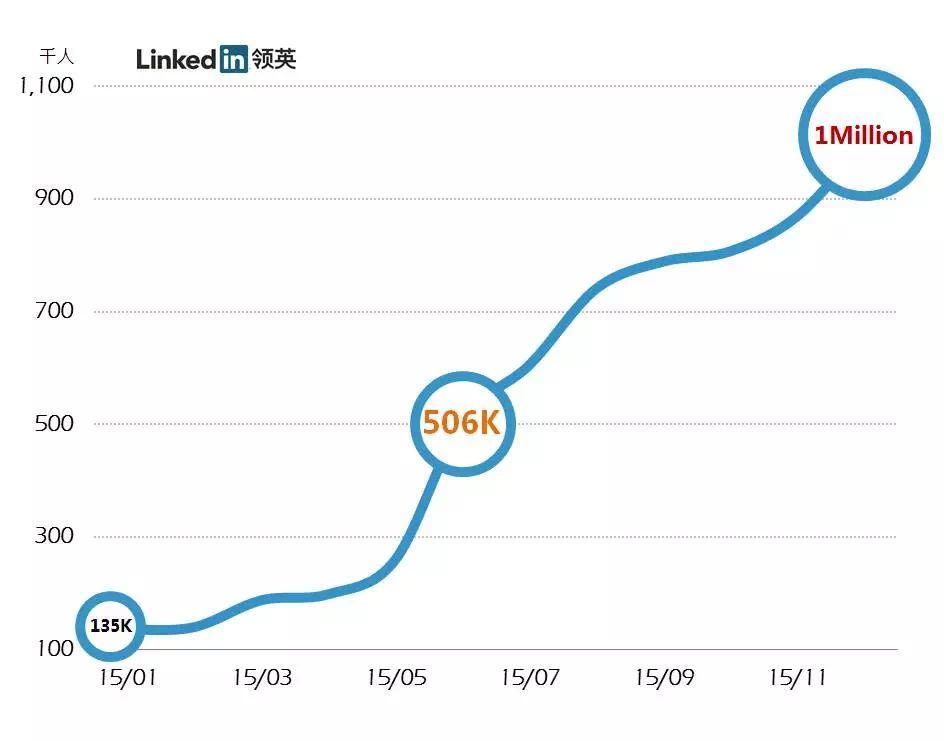Zou Tong, lead manager of LinkedIn’s WeChat account, shares the secrets which helped him grow LinkedIn’s WeChat account to 1 million followers within 1 year.

Some basic principles when you operate you WeChat account
-
Don’t treat WeChat marketing as a weekday job
Zhou says: “One way to rapid grow WeChat follow is to report about current events. This means you have to be on standby even if it’s a weekend. Our first article that got viral (more than 100 thousand views) is ‘The WeChat Moment Ads are Here, Do You Know What Moment Ads Look Like Abroad?’. We published this article at 9pm on a Sunday night, right after WeChat released the first Moment Ads. The team had actually prepared this article days before the news was released, and they made sure to post the article at the right time.”

The first article LinkedIn got more than 100k views.
Track Maven, a social data analysis platform collects the posting time vs. engagement data from 4,618 brands’ 1,167,426 blogs.
Weekends are ripe for social media posting engagement. The study shows only 13.1% of blog contents are posted during weekends, however they account for 32.6% of total social shares.

The following two graphs show the correlation between posting time and social engagement.
Once again: timing is the key.


-
Content positioning
Understand your user through testing different types of content and analyse performance. This key rule was not always followed by LinkedIn. As many foreign companies, it started out simply translating and localising content previously created for Western markets.
Zhou says: “Among the early days of managing LinkedIn’s WeChat account, we posted an article: ‘5 sentences, how to write a great recommendation for your friend’? It only got 2,000 views (the account had 80,000 followers back then). This came as at a surprise. After developing a deeper understanding of our user requirements, we realized Chinese users do not have a tradition of writing recommendation letters. This article was not something users could apply to their life and relate to.”
-
Express clear and distinctive values
Make sure your account represent the value of your brand. Following hot topic is maybe a shortcut to grow followers, but you must know when to stop.
Zhou says: “On July 15th, right after the famous incident of Uniqlo’s dress room sex video, we published an article that encouraged people to stop paying too much attention to gossips, but to be curious, and appreciate more simple aspects of their everyday life. We were prepared to receive a low reading rate for this article. But the result was surprisingly good. It got 370k views and added 13k followers. (On average, a 1 million views bring 10k follower). By not following the popular trend, we clearly highlighted the values by which LinkedIn stands.”

LinkedIn article “We believe curiosity and dream can beat gossips”
-
Hire people with actual media expertise: not just tech and marketing staff!
You are competing with 10 million other WeChat official account, you need a diversified team with media experience to operate your WeChat.
Zhou says: “Media background is important when you pick your WeChat team. For example, if you look at the WeChat articles that got over 100k views, these accounts are mostly run by professional reporters. Here are a few example:
- 商务范 (business related news and fashion) is operated under the leads of Deng Weizen, a ex Xinhua News reporter.
- 严肃八卦 (political and current event gossip) is operated by Wenhua news reporters.
- 石榴婆报告 (fashion blog) is operated by Cheng Yan, a news major student from Fudan University. “
5. Treat your WeChat account like a startup
Zhou says: “WeChat is not a magazine. The difference between WeChat and traditional media is much greater than the difference between Buzzfeed and New York Times.
You should think of your WeChat account as a MVP (minimal viable product), or a startup. It’s okay if you haven’t determined the style or the positioning of your WeChat account, it’s more important to build a team and start testing to optimize the content for your target followers.

For us, we finally started to have a better understanding of our users in March 2015, after 5 month of operating the LinkedIn account. You can see from the following growth graph how user growth accelerated after we figured out the ideal positioning for our account.

The content that brings a lot of followers are “offers” and “women” special articles. Both were first launched during our testing phase and got really good feedback. These two categories are now part of our weekly posting special.”
-
Data, data, data
Zhou says: “We analyze the data on the WeChat backend. For example, you can tell where your followers comes from: scanning QR code, sharing of account name card, or reading of your articles.
Checking which menu buttons are the most clicked also helps us narrow-down the categories of greater interest to our users.”
These metrics tracked by LinkedIn are not all you can do about WeChat analytics: setting up your own WeChat HTML5 websites enables you to further track user behavior (by checking the exact behavior of individual users, and tracking re-shares).
7. The magic is in the title
According to Zhang Xiaolong, for subscription account, 80% of views are coming from WeChat Moments. This means that when users decide to read your content, all the information they have is the small cover picture and your title.
Zhou says: “After Sheryl Sandberg’s husband died, we send an article about her twice on our account. We changed the title from “Slowly, I am the only female in the Room” to “We send our best wishes to that women who inspired the whole world”. With only changing the title, the view increased from 90k to 810k, a 900% increase.
Shortcut tip: try to use the pronoun “You” in the title.”
